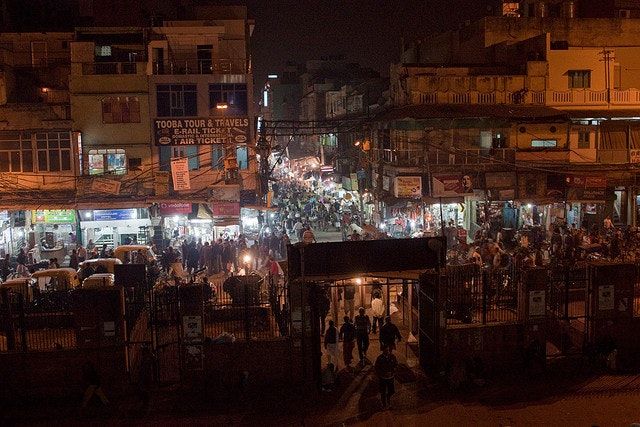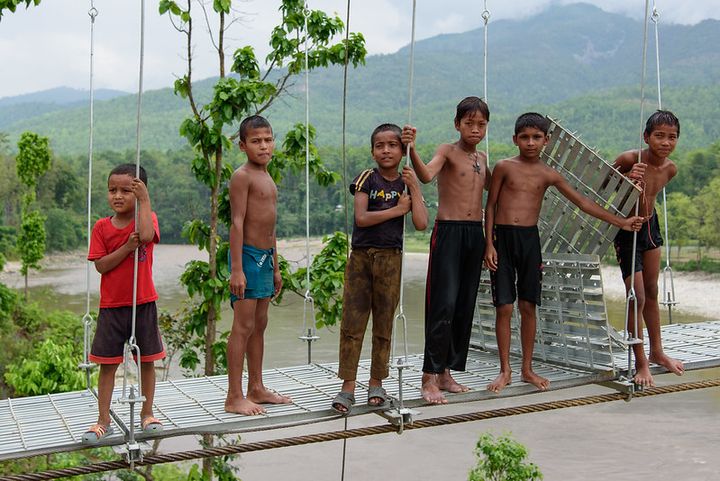The Weekend Read: Why India can't do net zero alone
Climate policy expert Aditya Valiathan-Pillai on regional energy cooperation

Welcome to this weekend’s edition of Lights On, a newsletter that brings you the key stories and exclusive intel on energy and climate change in South Asia.
In case you missed this week’s big story, a potential net zero target for India, head to my Friday entry for an analysis of what it would take to get there.
If you are not a subscriber, you can sign up below, for free, or you can support my work by purchasing a membership:

The news that India may be joining the ‘net zero’ club - together with China, the UK and other major economies - and pledge to decarbonise its economy by 2050, has sent the climate community scrambling for practical solutions to achieve the target. Central to the feat is the need to electrify the country’s energy system as a way to remove as much fossil fuel as possible, as fast as possible.
Beyond the well documented roadblocks to such a radical systemic change, a politically thorny aspect has been overlooked - one that could make or break India’s efforts towards a just energy transition.
I spoke with Aditya Valiathan-Pillai, climate policy expert with the Center for Policy Research in Delhi, about how new regional cooperation is essential to decarbonise India’s energy system, whether a net zero target is met or not.
Lights On: Why is it important to talk about regional electricity markets, or power pools, when addressing the net zero debate?
Aditya Valiathan-Pillai: People have long talked about expanded grids as a way of adding large amounts of renewable energy to your energy mix. And that's simply because renewables are intermittent: the sun might be shining in one place, wind may be blowing in another place. And then a third country, maybe that’s mountainous and has hydropower that can balance those two.
The idea of having a pan-continental grid, or a multi-country grid at the very least, has existed for a very long time, and has only been amplified and gained traction with the rise of modern renewable technologies. It has a lot of political salience in the sense that it creates interdependencies between countries and is seen as a way of actually preventing conflict, much like the EU as a multilateral system is essentially a security arrangement.
But then as climate change became a more urgent problem, as renewables started becoming more cost effective, suddenly it became almost a prerequisite to having a fully green grid. The reason why this idea doesn't always take the top spot in the debate is because of the huge political costs involved in creating something like this.
How would the idea of a power pool pan out in today’s India?
If you are thinking about a long term net zero target for India, you want to get to it without having to install expensive balancing technologies [to solve the intermittency problem], such as large batteries, or pumped hydro storage. Those things are hard to build. They're expensive. So the idea is, can you expand [your grid] further out to countries like Nepal and Bhutan, who naturally have a lot of hydropower, or say Bangladesh, which seems to be investing in natural gas, also a good balancing technology.
So you create a grid that spans many countries. And India now officially has ambitions to start looking at West Asia and Southeast Asia where you have even greater balancing potential because it's a much wider area.
Even while talking about this, it seems like this is not something we're going to get to in the next 10 or even 20 years the way geopolitics is aligned right now. But net zero is a long term conversation and it's very clear that for India it's not something that's viable on a 2050 or even a 2060 [timescale].
So do you think the target that has been floating in the news this week is unrealistic?
If you have the ability to deny a large percentage of the population access to energy, or cheap energy, then it is possible. But in a country like India with a democratic setup, not I don't think a 2050 timeframe is possible.
If you were able to have transformative technology, for example, and finance – let's say hydrogen comes to maturity, and you're able to use it in a fairly widespread manner, you could potentially make a conditional pledge, saying ‘we are aiming at 2070, 2080, but it could be faster’.
All of it is just speculative. But what we can say concretely is that we're looking at this being a 30 to 60 year timeframe. That's roughly the range between the most optimistic and the least optimistic, and after which the climate impacts have become so severe that we'll have trouble with it. And over that long period, I think it is possible to construct these multi country grids if we're pragmatic about what the trade-offs are, but also have a very clear vision of the sort of regionalism we want.
I think that's the key point. A lot of South Asian regionalism has lost its momentum and [we can] reorient this vision around what climate might need, and what climate might offer in terms of a long term narrative for South Asia and beyond. And for India's leadership, not only in the Global South, but in the world. So that's the other possibility that the net zero idea would then open up.
What would this new regionalism entail in practice?
I think the first and most concrete need is having an institutional framework that allows [a regional energy market] to happen. For example, revitalizing SAARC [South Asian Association for Regional Cooperation] would be a good strategic way of starting that conversation, and then moving it outwards. There is a strong link to be made between regionalism and climate, because it encompasses several areas. Electricity being one, but then you have rivers, biodiversity, other sorts of ecological protections, scientific research. And so you're approaching the question through net zero, but even if that were to go away, I think what will remain is the fact that this region will have to collectively deal with climate – reducing emissions and adaptation – together.
The idea of a regional electricity market seems to be gaining new momentum in India - one example is the One Sun, One World, One Grid (OSOWOG) project. But on the other hand, the government is also implementing new protectionist measures for the energy sector, for example new custom duties for solar imports. What do you make of this contradiction?
I think security and geopolitics is the prism through which all of this is seen. And in a way, what I'm arguing for is to shift that prism and look at all of this through a more long term vision. And that's the climate lens. There's an odd tension here, between just the idea [of regional cooperation] itself and how they're approaching implementing the idea right now.
There's the long term strategic, calculating mind and the short term protectionist, defensive mind. And they're in conflict with each other. So what you see now, in terms of the way the electricity trade project is shaping up, is that India is enacting all sorts of barriers to participation in the market with an eye towards China and preventing them from taking part.
And that is quite understandable given India has a keen interest in South Asia and wants to make sure that it remains a territory friendly to India rather than fall under the sway and influence of the Chinese. But then the question is, what is the trade-off with whatever your long term vision is, particularly for things like OSOWOG.
Is this debate specific to Asia or are there global lessons on the future of the energy transition?
The Indian idea is not unique. It's not even an idea that is alone in Asia. If you go further afield, there’s Europe, there's a Southern African power pool, there are Central American and North American pools. And now Australia is thinking of exporting renewable energy, all the way out to Singapore.
So if we look at the question as a global issue rather than this fanciful ideation in New Delhi, then the question becomes how do you secure the participation of countries that are closest to you. As renewables keep increasing, you are going to start seeing [the creation of] institutions that allow free participation in domestic markets, and then eventually morph into a power pool similar to what Europe has, where you have firm institutions that take decision-making away from the countries into these independent regional bodies. To get there, though, you have to start building those lines of trust with other regional capitals quite soon.
That’s all for today! If you like what you read, please consider signing up for free or as a member:



